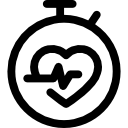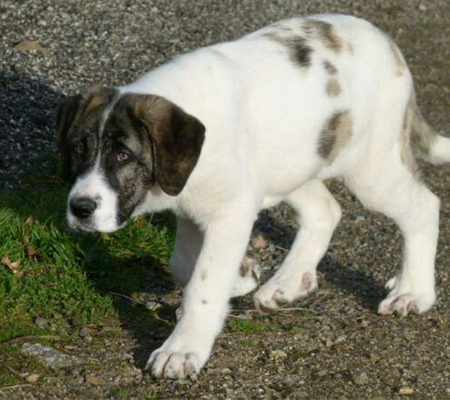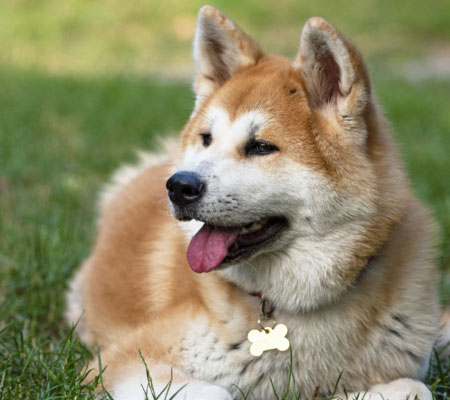The Co de Gado Transmontano is a giant dog that
is said to be the largest of the Portuguese dog breeds. He is strong and
muscular, with a huge head, and can reach a height of 83cm and a weight of
65kg.
He's rugged and doesn't mind living in the open.
He has lengthy legs, a broad chest, medium-length floppy ears, and a long tail.
Although it comes in a range of lengths, the coat is typically short. The
medium-length coated dog with the correct coloration is considered a pure
breed. The dog's coat is white with brown, fawn, grey, brindle, and black
spots.
Cão de Gado Transmontano Highlights
Breed Size
Large
Nature
Playful, Friendly
Energy Level
Active
Intelligence
Medium
Barking Level
Infrequent
Coat Length
Long, Medium
Breed Group
Working
Droll Amount
Low
Good with
Familes, Children, Dog
Feed Level
Medium, High
Colour Type
White black golden brown with some yellow hairs
Other Facts
Easy to kept at home, easy to outside walk, easy to train, easy to groom.
Dog History
The Co de Gado Transmontano, commonly known as
the Transmontano Mastiff or Transmontano Cattle Dog, is a big dog breed. This
is an unique molosser working dog from the Portuguese province of
Tras-os-Montes and Alto Douro.
The huge dog has long been used to herd animals
and keep wolves at bay. The Tibetan Mastiff and a Portuguese cow dog known as
the Rafeiro do Alentejo are said to be the dogs' ancestors. The dog resembles
the short-haired Estrela Mountain Dog in appearance.
The breed was remained restricted to Portugal in
1995, but it has since been introduced to Oregon, USA, as part of an experiment
to document larger breeds and their involvement in wolf protection. Since 2008,
they have been reintroduced to north-east Oregon.
22-27 inch 43-55 kg 10-13 year
Height

Weight

Life Span
Health and Care
The Co de Gado Transmontano is a hardy dog who is
used to protecting sheep for lengthy periods of time. He is, however, a
companion dog these days, and you should be aware of several frequent canine
disorders that might rob him of his health and joy of life.
Hip Dysplasia: Hip dysplasia is a loosening of
the hip joint that can affect any dog, although it is more frequent in big
dogs. It's a condition that can cause arthritis, discomfort, and joint
degradation. It's an illness that may be devastating for your dog, and you'll
need to take him to the doctor as soon as possible.
Dilated Cardiomyopathy is a heart illness that
affects giant breed dogs and causes the heart to weaken and stop pumping blood
adequately throughout the body. Coughing, weakness, breathing difficulties, and
a fluid-filled abdomen are all symptoms.
Caring
Taking care of transmontano cao de gado pups You
don't have to overfeed this giant dog just because he's big. He's muscular and
athletic, and if he keeps his diet in check, he'll stay strong, lean, and
healthy. You may feed him cooked chicken, rice, and veggies in addition to a
high-quality pet food. Mix in some raw meat with his dog chow every now and
then to keep his skin free of rashes and itching. He needs access to fresh,
chilled water at all times of the day and night since he drinks so much.
Although the Co de Gado Transmontano appears to
be a powerful canine, it is not violent. They are brave and, most importantly,
affectionate and faithful to their human family.
If you want to keep one of these enormous dogs as
a pet, you must ensure that he understands who is in charge. This dog can be
trained and socialised to become a gentle giant who makes an excellent family
pet.
Dog Breed Care Tips and
Important Instructions
Minimal grooming is required for the Cao de Gado
Transmontano. Seasonal flea treatment is required, but a professional groomer
is not required to trim the dog's hair. To avoid infections, clean your ears
and eyes on a regular basis. If you don't have the time, talent, or money to
care for a high-maintenance dog, Cao de Gado Transmontano is one of the finest
options. Beginners will benefit much from this book.
Transmontanos Cao de Gado sheds sparingly. It's a
part of the hair's normal growth cycle. Brushing your hair on a regular basis
lowers the quantity of hair that sheds. It is mostly determined by their health
and breed type.
Average time is 4-6 weeks. This family dog should
be groomed at least once every 4-6 weeks, according to experts. According to a
research, 56% of dog owners don't bathe their dogs as often as they should, and
60% use the smell test to determine whether it's bath time. Bathing your dog is
good to them in a number of ways. Look for strange scrapes, lumps, fleas, and
other anomalies now. These features are more noticeable when their hair is damp
and flat on their bodies.
Feeding
- Around the age of eight weeks, a Co de Gado
Transmontano puppy is fully free of his mother's milk. As a result, we'll
assume it's totally weaned when you adopt it.
- To begin with, you're not going to modify the
puppy's nutrition all of a sudden. As a result, you'll need to speak with the
previous owner or breeder about how to handle the first few weeks. And if the
breeder used to feed him kibbles and you want to switch, you'll have to ease
into it. You can gradually introduce and mix the new diet with the old over the
course of two weeks or longer.
- You'll need to feed your Co de Gado Transmontano
puppy multiple times a day:
- 3 to 4 meals a day for animals aged 2 to 6 months,
then 2 meals a day for up to a year (and for certain Co de Gado Transmontano,
you can continue in this manner even as an adult) to avoid stomach torsion.
- Rations will need to be adjusted according to his
age, race, weight, and lifestyle...
- Remember to keep an eye on your puppy's
development. Indeed, it will be required to convert to a "Co de Gado
Transmontano adult" diet after it has attained 90% of its ultimate weight.
Fun Facts
- Cao de Gado Transmontano is extremely
intelligent. In 15 to 25 repetitions, they grasp and recall new orders.
- Transmontanos Cao de Gado are simple to train.
They soon figure out the connection between orders and actions.
- The Transmontano Cao de Gado is a lively breed.
You'll know it's ready to play when you hear excited barking and nipping.
- Cao de Gado Transmontanos despise an
unpredictable daily routine, a loud home, and many visitors. This breed's
emotional level mimics that of its owner, and they do not respond well to
punishment.
- Transmontanos Cao de Gado are extremely loving
dogs. They like being a part of the family's activities. This breed isn't known
for being aloof.
- Transmontanos Cao de Gado require a lot of social
connection. They want to be with or around others all of the time. This breed
despises being alone.
- The Transmontano Cao de Gado is a very boisterous
breed. They adore wailing and barking loudly. Not the greatest pick if you want
a calm dog. Fear, attention, alarm, boredom, greeting, separation anxiety,
obsessive barking, and defence are the most common causes of barking.
Home Training Tips and General
Information
To teach your Cao de Gado Transmontano dog the
four fundamental training commands, you'll need a dog collar and a dog leash.
SIT- If you want to teach your Cao de Gado
Transmontano dog to sit, you'll need the two dog collars and the dog leash.
After you've placed those two objects around your dog's neck, you can begin
teaching it commands. Pulling up the leash while pushing down the dog until it
sits is required for the sitting command. While performing this activity, it is
critical to offer the vocal order.
STAY- you must first have your dog sit. Then,
while standing in front of your Cao de Gado Transmontano dog and asking the
remain command, you may train it to stay by maintaining the leash over its head.
After repeatedly practising these instructions, the dog will be able to carry
them out without assistance by just asking it to adopt the posture.
Lay DOWN - There are two ways to teach the lie
down command to your Cao de Gado Transmontano dog. The first method is placing
your hand over the dog's shoulder blades and pressing down while issuing the
command. The second technique is to use the dog leash and tug it diagonally
towards the dog's back while verbally commanding the order. It is critical to
reward the dog whenever it obeys and listens to your commands.
STAND - training your Cao de Gado Transmontano
dog to stand will need you to manipulate the dog collar in a way that causes
the dog to stand. To be more exact, you should grip the collar and then pull it
forward for around 20 seconds, keeping the dog in the stand posture. If the dog
attempts to move, gently press the collar in the other direction until the dog
stands up.
FAQS
|
In Ireland, where can I find a puppy cao de gado transmontano with an
excellent pedigree? |
|
Although the Cao de Gado Transmontano is from Portugal, the American
Eskimo Dog hails from the United States. Cao de Gado Transmontano may reach a
height of 35 cm (14 inches) when compared to American Eskimo Dog. Cao de Gado
Transmontano may weigh up to 49 kilogrammes (109 pounds) more than an
American Eskimo Dog. Transmontano Cao de Gado may live three years less than
Americans. |
|
In Uganda, where can I find a puppy goldador with a decent pedigree? |
|
All Goldadors sold have a current median price of $697.50. This is the
price a Goldador with papers but no breeding rights or show qualities may be
expected to cost. If you buy a dog without papers, you might expect to spend
less. |
|
Are transmontano cao de gado aggressive? |
|
BEHAVIOUR/TEMPERAMENT: Despite its size, it is a quiet and placid dog. It
is cautious without being aggressive, and it constantly maintains a calm and
placid demeanour. It is a great guard when it comes to guarding flocks from
wolf attacks, and it is constantly alert in its duties. |
|
Is transmontano cao de gado hypoallergenic? |
|
Cao de Gado Transmontanos are hypoallergenic, although they cause
allergic reactions in allergy patients. Cao de Gado Transmontanos are not
suitable for living in apartments. |
|
Are transmontano cao de gado pups lazy? |
|
Kangal Dogs sleep an average of 12-14 hours a day and are not considered
a sluggish breed. Cao de Gado Transmontanos are active canines who do not
spend much time napping. |
Cão de Gado Transmontano Unique Name
| Male Name | Female Name |
|---|---|
| Blake | Alyssa |
| Boomer | Aspen |
| Brady | Chance |
| Charlie | Daisy |
| Chase | Dixie |
| Coco | Ellie |
| Emmett | Fiona |
| Hank | Inez |
| Maximus | Jessie |
| Odin | Jill |
| Oreo | Julia |
| Mimi | Kayla |
| Ringo | Lola |
| Sarge | Miley |
| Shiloh | Pandora |
| Yoshi | Star |
| Ziggy | Tilly |
| Whiz | Bridgette |
| Willow | Carley |
| Yeller | Kasey |





